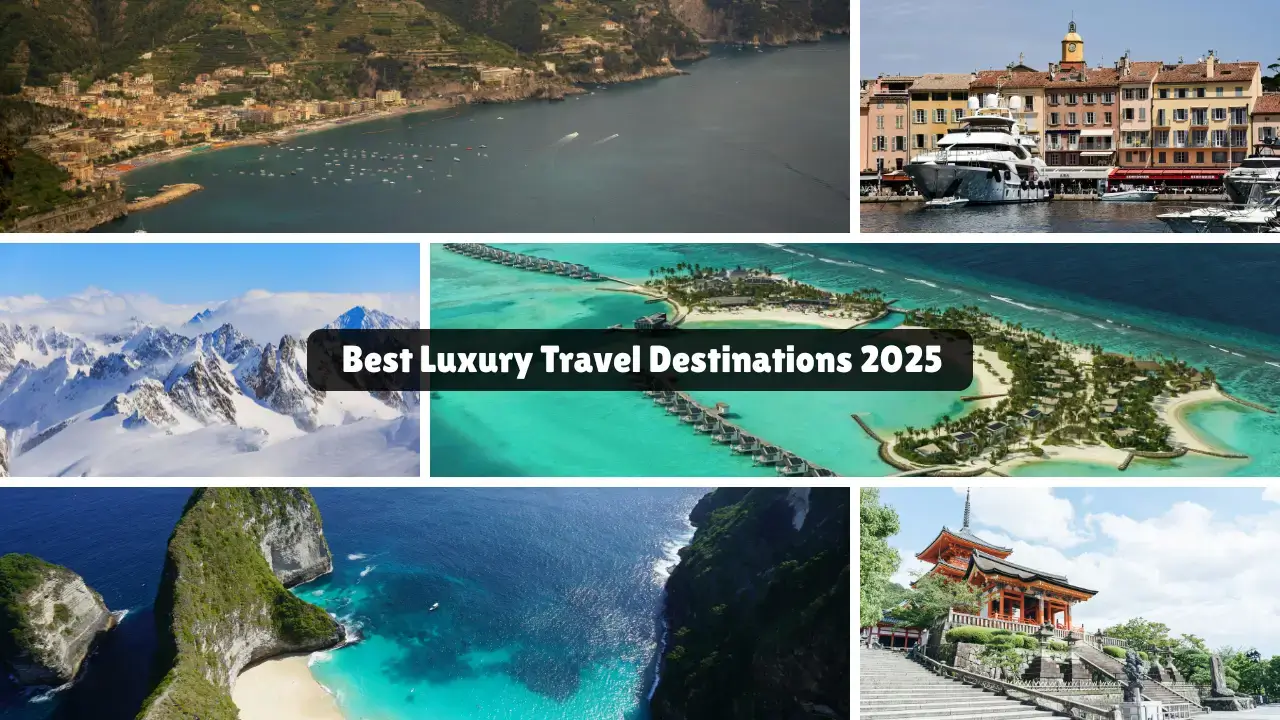Introduction to Luxury Travel in 2025
Evolving Trends in Luxury Travel
Luxury travel in 2025 is nothing like it used to be. Gone are the days when luxury simply meant plush hotel rooms and first-class flights. Today’s elite travelers are chasing unique, exclusive, and deeply personal experiences. In 2025, luxury is about immersion, privacy, personalization, and sustainability—all wrapped in elegance. It’s no longer about how much you spend, but how unforgettable the experience is. Imagine waking up in an overwater villa in the Maldives, spending your afternoon learning to cook authentic Japanese cuisine with a Kyoto master chef, or taking a private hot-air balloon ride over the Serengeti at sunrise.
There’s also a significant shift towards wellness and holistic rejuvenation. High-end travelers are seeking out wellness retreats nestled in the mountains of Switzerland, or oceanfront spas in Bali that combine traditional healing with modern science. Wellness is no longer an amenity; it’s the main event.
Technology is playing a big role too. Luxury travel planners use AI to craft itineraries tailored to every whim, while biometric access in airport lounges and private terminals is streamlining the entire journey. And let’s not forget about sustainability. The elite now care deeply about the impact their travel has on the environment. Eco-luxury lodges, carbon-neutral jets, and organic culinary experiences are becoming the norm.
In essence, luxury travel in 2025 is no longer about excess; it’s about meaningful, transformative moments. It’s about stories that can’t be replicated and places so exclusive only a handful ever experience them.
What Makes a Destination Truly Luxurious?
What separates a luxurious destination from a regular one? It’s not just the price tag. In 2025, a luxurious destination is defined by exclusivity, service, personalization, and aesthetics. A truly luxurious escape allows you to disconnect from the chaos and reconnect with yourself. It offers privacy—like a secluded villa perched on a cliffside in Santorini, where the only thing you hear is the sound of the waves below. It delivers excellence in service, where every need is anticipated before you even voice it.
The design and atmosphere are meticulously curated. Think infinity pools with panoramic views, designer interiors, locally sourced gourmet food, and a sense of timeless elegance. It’s not about being flashy; it’s about being tasteful, refined, and unforgettable.
Moreover, a luxurious destination offers experiences that cater to the soul. Whether it’s a private guided tour of the Louvre after hours, an intimate wine tasting in an Italian vineyard hosted by the winemaker himself, or stargazing in the Atacama Desert from a five-star observatory lodge, the emotional value is immense.
In short, luxury destinations are not just places—they’re feelings. They touch all your senses, spoil you rotten, and leave you forever changed.
Europe’s Elite Escapes
Amalfi Coast, Italy – Cliffside Elegance and Timeless Charm
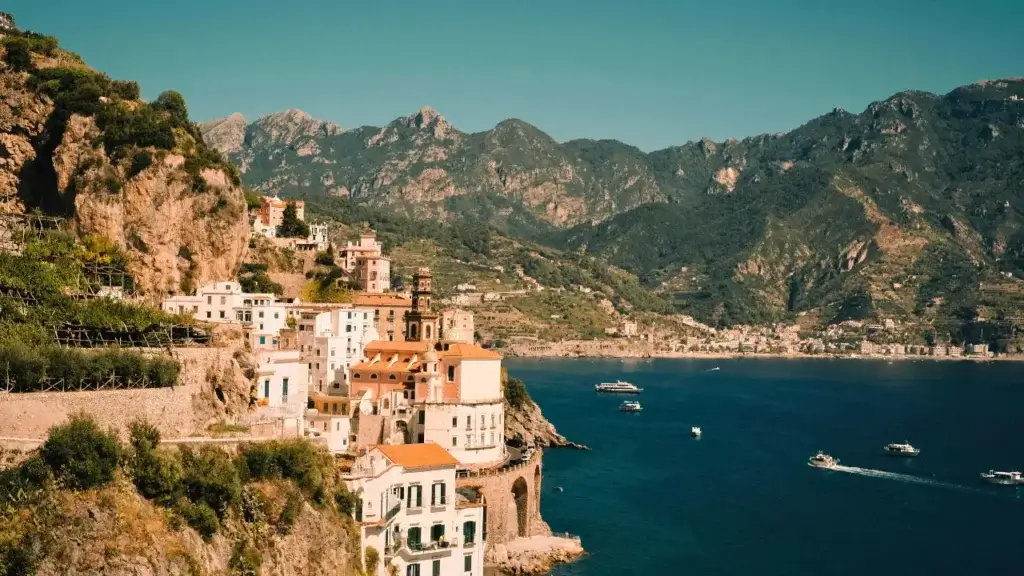
Credit: Canva
Italy never goes out of style, and the Amalfi Coast remains one of its crown jewels. In 2025, this UNESCO World Heritage site continues to captivate high-end travelers looking for dramatic scenery, gourmet experiences, and historic charm. Stretching from Positano to Ravello, the Amalfi Coast blends rustic romance with lavish indulgence. Imagine sipping Limoncello on your private terrace while watching the sun dip below the Tyrrhenian Sea, or arriving at your boutique hotel by private yacht.
The coast is dotted with luxurious villas and historic hotels like Le Sirenuse and Belmond Hotel Caruso, each offering panoramic views and world-class amenities. Service here is warm, personalized, and discreet—the very essence of Italian hospitality. You can dine under lemon groves, charter a private boat to the island of Capri, or take a scenic helicopter ride over Mount Vesuvius.
For foodies, this region is a paradise. Hand-made pasta, fresh seafood, local wines, and centuries-old culinary traditions are part of every meal. And for those seeking wellness, many high-end resorts now offer spa treatments inspired by ancient Roman baths and modern European techniques.
Beyond the indulgence, the Amalfi Coast offers a cultural richness that’s hard to match. From Byzantine churches to artisan workshops, every street whispers history. It’s not just a destination; it’s a dream carved into a cliffside.
Pros:
- Breathtaking Scenic Views
With its dramatic cliffs, turquoise waters, and postcard-perfect villages, the Amalfi Coast offers some of the most stunning views in the world. Every room with a view feels like a private masterpiece. - Luxury Accommodations
The Amalfi Coast is home to world-renowned hotels like Le Sirenuse, Hotel Santa Caterina, and Belmond Hotel Caruso. Expect personalized service, elegant interiors, infinity pools, and Michelin-starred dining. - Exclusive Experiences
Private yacht tours, guided visits to ancient ruins, wine tasting in hillside vineyards, and helicopter rides over Mount Vesuvius—this destination delivers unforgettable luxury. - Culinary Excellence
Fresh seafood, handmade pasta, and locally grown lemons form the foundation of a world-class cuisine scene. Dining here is a sensory journey. - Cultural and Historic Richness
From charming fishing villages to centuries-old churches and cobbled alleyways, the Amalfi Coast combines relaxation with cultural depth.
Cons:
- Peak-Season Crowds
The Amalfi Coast is incredibly popular, especially in summer. This can mean crowded roads, busy restaurants, and fully booked accommodations—unless you plan well in advance. - High Price Point
Luxury in this region doesn’t come cheap. From accommodation to dining and transport, everything is on the premium end of the spectrum. - Limited Accessibility
Its rugged terrain and narrow, winding roads can make travel challenging, especially for first-time visitors or those not used to driving in Europe. - Limited Availability in Top Hotels
Due to its popularity and exclusivity, luxury hotels often sell out quickly, requiring early bookings and flexible travel dates.
🌟 Ready to Experience the Amalfi Coast Like Never Before?
Step into a world where every sunrise feels cinematic and every meal is a celebration. Whether you’re planning a romantic escape, a luxury honeymoon, or simply seeking a slice of Mediterranean magic—the Amalfi Coast is calling.
👉 Plan now. Travel luxuriously. Make memories that last forever.
Saint-Tropez, France – Glitz, Glamour, and Azure Waters
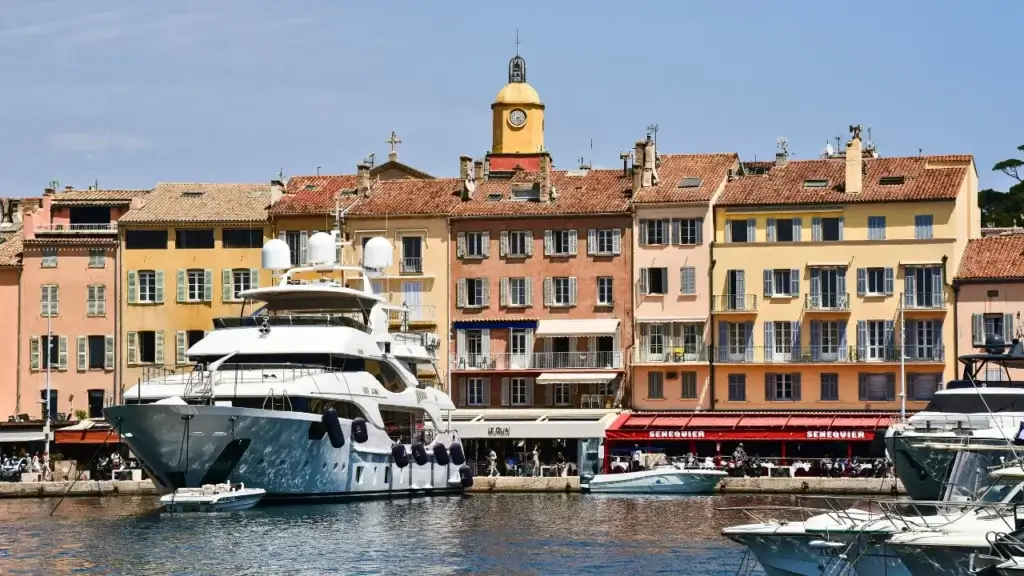
Credit: Canva
Saint-Tropez is the epitome of French Riviera chic. Once a quiet fishing village, it exploded into a playground for the rich and famous thanks to icons like Brigitte Bardot. In 2025, it remains a haven for jet-setters seeking sun-drenched beaches, designer boutiques, and legendary nightlife. But beneath its flashy exterior lies a refined and seductive charm.
Luxury here is as much about attitude as it is about amenities. Stay at legendary hotels like Château de la Messardière or indulge in a villa overlooking Pampelonne Beach. Private beach clubs like Club 55 offer ultra-exclusive cabanas where champagne flows freely and DJs spin until sunset.
Beyond the beach, Saint-Tropez is a gastronomic hotspot. With several Michelin-starred restaurants, including La Vague d’Or, this town serves up culinary artistry alongside impeccable views. Art lovers can explore the Annonciade Museum, while shoppers can stroll the cobblestone streets lined with high-end fashion houses and one-of-a-kind local designers.
Yachting is a way of life here. The harbor is filled with gleaming superyachts, and you can charter your own for a sunset cruise along the Côte d’Azur. Whether you’re sipping rosé by the sea or dancing under the stars, Saint-Tropez offers an unmatched blend of luxury and joie de vivre.
Pros:
- Iconic Jet-Setter Destination
Synonymous with luxury and celebrity culture, Saint-Tropez is the ultimate playground for the rich and famous. From designer boutiques to exclusive beach clubs, the vibe is effortlessly chic. - Stunning Azure Coastline
The beaches of Saint-Tropez are nothing short of breathtaking. Pampelonne Beach offers pristine white sands, turquoise waters, and elite beach clubs like Club 55, Nikki Beach, and Bagatelle. - World-Class Dining and Nightlife
Saint-Tropez is home to a mix of Michelin-starred restaurants and upscale bistros. By night, the town transforms into a glamorous hub with VIP lounges, celebrity parties, and lively clubs. - Luxury Shopping Haven
For fashion lovers, Saint-Tropez offers an impressive selection of high-end boutiques—from Chanel and Louis Vuitton to unique local designers, all within a stylish, walkable town center. - Yachting and Coastal Excursions
Saint-Tropez’s iconic harbor is lined with gleaming superyachts. Charter a private yacht for a day cruise to nearby gems like Cannes, Antibes, or the Îles d’Hyères.
Cons:
- Premium Price Tag
Expect to pay top dollar. From accommodations to dining and entertainment, luxury in Saint-Tropez comes at a cost—especially during peak season. - Seasonal Crowds
During summer, Saint-Tropez can become overwhelmingly crowded, with packed beaches, fully booked hotels, and heavy traffic on its narrow coastal roads. - Exclusive But Not Always Accessible
Many top beach clubs, lounges, and events require reservations or insider connections, which may limit spontaneous plans. - Limited Activities Beyond Glamour
If you’re not into nightlife, fashion, or beach lounging, the options for alternative high-end experiences (like nature or culture-focused travel) may feel limited.
🌴 Live the Riviera Dream in Saint-Tropez!
Sun-soaked days, champagne-soaked nights, and a front-row seat to the French Riviera’s most glamorous scene—Saint-Tropez is where luxury becomes lifestyle. Whether you crave a yacht party at sea or a quiet moment on a private terrace overlooking the bay, this destination delivers unforgettable elegance.
✨ Make your summer extraordinary.
👉 Book your luxe escape to Saint-Tropez now and experience glitz, glamour, and azure waters like never before.
Swiss Alps, Switzerland – Alpine Luxury and Serenity
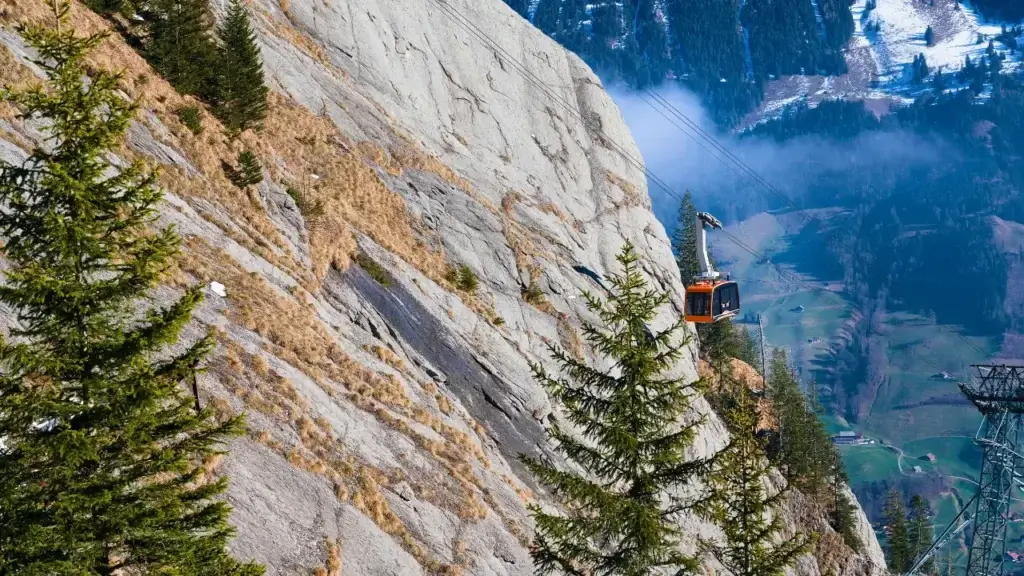
Credit: Canva
When people think of the Swiss Alps, they often imagine snowy slopes and cozy chalets—but in 2025, this region has evolved into one of the top luxury destinations in the world, whether you’re visiting for skiing, hiking, or pure relaxation. Picture this: you’re staying in a mountainside resort like The Chedi Andermatt or Badrutt’s Palace, surrounded by snow-capped peaks, with every detail curated for your comfort—from heated floors to in-suite saunas and butler service.
The Swiss Alps combine the best of high-end travel: natural beauty, top-tier hospitality, and a calming ambiance that feels like it was custom-built for wellness. Many luxury lodges and hotels here offer wellness retreats that include hydrotherapy, yoga, meditation, and nutrition-based fine dining—all set in panoramic mountain landscapes.
Wintertime is all about private ski lessons, exclusive lift access, and après-ski in stylish lounges. But the Alps aren’t just a winter destination anymore. During the warmer months, the region transforms into a hiking and biking paradise with luxury picnic setups and helicopter tours over the Matterhorn or Jungfrau. The service is discreet yet impeccable, always a few steps ahead of your needs.
The Swiss are known for their precision, and that extends to their hospitality. Whether you’re getting a massage using alpine herbs or savoring a cheese fondue by a roaring fire, every experience is executed flawlessly. It’s a sanctuary where luxury meets nature in the most sophisticated way possible.
Pros:
- Unmatched Natural Beauty
The Swiss Alps offer some of the most awe-inspiring landscapes in Europe. Towering snow-capped peaks, mirror-like lakes, and charming alpine villages create a postcard-perfect setting year-round. - World-Class Luxury Resorts
Accommodations in the Swiss Alps are the definition of refinement. Think chalets with heated floors, spa suites with panoramic mountain views, and five-star service at legendary hotels like The Chedi Andermatt and Badrutt’s Palace. - Premier Skiing and Outdoor Adventures
With pristine ski slopes, state-of-the-art lifts, and exclusive ski-in/ski-out access, it’s a paradise for winter sports lovers. In summer, it transforms into a playground for hiking, biking, and mountaineering—all paired with luxury amenities. - Health and Wellness Focus
The Alps are a wellness haven. Many resorts offer high-end spas, hydrotherapy, and holistic treatments rooted in both Swiss precision and natural remedies. Perfect for relaxation and rejuvenation. - Exclusivity and Tranquility
Unlike more tourist-heavy spots, the Swiss Alps maintain an air of calm sophistication. Private chalets, serene spa villages, and discreet luxury make this an ideal spot for those seeking peace and privacy.
Cons:
- High Cost of Travel and Stay
Luxury in the Swiss Alps is exquisite—but it’s not cheap. Everything from lift passes to fondue dinners comes with a premium price tag. - Limited Nightlife
If you’re looking for lively clubs and late-night parties, the Alps may feel too subdued. The focus here is more on relaxation than revelry. - Weather-Dependent Activities
While beautiful in all seasons, weather changes can impact plans—especially for outdoor excursions. Heavy snowfall or rain can limit access to some routes and activities. - Remote Accessibility
Getting to certain alpine destinations may require multiple transfers via train or car, which can be a bit time-consuming despite Switzerland’s efficient transport system.
🏔️ Ready to Elevate Your Escape in the Swiss Alps?
Imagine breathing in crisp mountain air from your private balcony, soaking in a thermal spa surrounded by snow-dusted peaks, or skiing down perfect powder with no crowds in sight. The Swiss Alps offer serenity with a side of sophistication—a haven for both adventure seekers and wellness lovers.
✨ Don’t just travel—transform.
👉 Reserve your luxury alpine retreat now and experience the Swiss Alps at their most sublime.
Exotic Asian Luxury Getaways
Kyoto, Japan – Traditional Tranquility Meets Modern Opulence
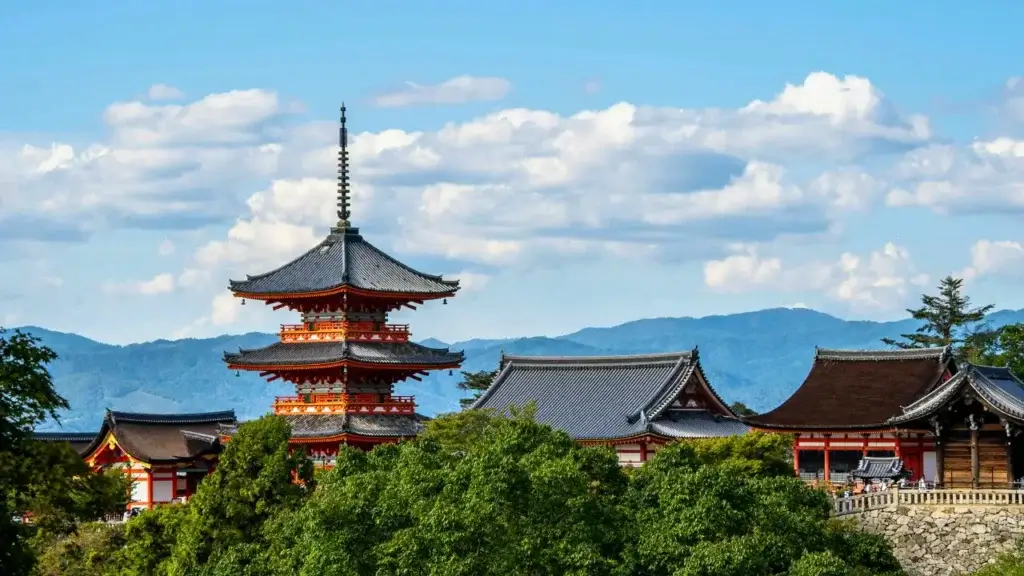
Credit: Canva
In 2025, Kyoto stands as a shining example of how a destination can preserve its heritage while embracing luxury. It’s not flashy, but that’s exactly why luxury travelers love it. Kyoto offers the kind of quiet, spiritual opulence that touches your soul. Imagine staying in a high-end ryokan like Tawaraya or Hoshinoya Kyoto, where you sleep on handwoven tatami mats and wake up to the peaceful sound of a nearby river.
The city is known for its stunning temples, traditional tea ceremonies, and exquisite kaiseki cuisine—a multi-course meal that feels more like art than dinner. But Kyoto is also embracing modern touches. Luxury properties now combine minimalist Japanese design with high-tech amenities, creating a balance that’s both comforting and cutting-edge.
One of the most exclusive experiences you can have is a private guided tour of the Gion district with a real geisha performance—something few get to witness. Or book a Zen meditation session in a centuries-old monastery followed by a personalized spa treatment using locally sourced herbs and oils.
Shopping in Kyoto is another unique experience. You’ll find luxury handcrafted goods, from silk kimonos to washi paper, made by artisans who’ve spent decades mastering their craft. It’s not just about buying things—it’s about understanding the story behind them.
Kyoto’s charm lies in its authenticity. It doesn’t need to try hard to impress—it simply is what it is: timeless, elegant, and deeply luxurious in a way that words struggle to describe.
Pros & Cons:
Dreaming of an authentic yet luxurious Kyoto stay? “Traditional Tranquility Meets Modern Opulence” promises a unique blend of ancient Japanese culture and contemporary comfort. But is it right for you? Let’s break it down:
The Pros: Why You’ll Love This Kyoto Sanctuary
- Unbeatable Kyoto Location: Nestled in a serene district (mention specific area like Higashiyama or Gion if possible), enjoy easy access to iconic temples (Kiyomizu-dera, Fushimi Inari), historic streets, and authentic culture, while escaping the heaviest tourist bustle.
- Authentic Ryokan Experience, Modernized: Immerse yourself in genuine Japanese tradition – think tatami mat floors, sliding paper doors (shoji), and possibly private onsen baths – seamlessly integrated with modern luxuries like premium bedding, climate control, and high-speed Wi-Fi.
- Exquisite Design & Ambiance: Experience breathtaking harmony. Traditional architecture, serene Zen gardens, and carefully curated antiques blend effortlessly with sleek, contemporary design elements and top-tier finishes, creating a uniquely peaceful and opulent atmosphere.
- Impeccable Service (Omotenashi): Experience true Japanese hospitality. Attentive, personalized, and discreet service anticipates your needs, enhancing the feeling of exclusive tranquility.
- Culinary Excellence: Savor meticulously prepared multi-course kaiseki dinners featuring seasonal, local ingredients, often served in-room for ultimate privacy. Modern breakfast options cater to international palates.
The Cons: Things to Consider
- Premium Price Point: This level of authentic luxury and personalized service comes at a significant cost. It’s an investment in a unique experience, not a budget option.
- Traditional Elements Require Adaptation: Sleeping on futons on tatami floors and navigating low furniture or traditional baths might feel unfamiliar or less comfortable for some Western guests. Embrace it as part of the cultural immersion!
- Potential Space Constraints: While luxurious, rooms may feel more intimate compared to large Western hotel suites, reflecting traditional Japanese design sensibilities.
- Limited On-Site Western Amenities: Focus is on the authentic Japanese experience. Don’t expect a large gym, extensive Western menus beyond breakfast, or a bustling bar scene.
- Accessibility Considerations: Traditional architecture (steps, narrow doorways, genkan entryways) might pose challenges for guests with significant mobility issues.
Is This Your Perfect Kyoto Escape?
If you seek an unforgettable immersion into authentic Japanese culture wrapped in contemporary luxury, value serene tranquility and impeccable personalized service, and are willing to invest in a unique experience, “Traditional Tranquility Meets Modern Opulence” offers a truly magical stay.
Ready to Experience Kyoto’s Soul in Ultimate Comfort?
Don’t just dream of tranquil gardens and exquisite kaiseki – secure your sanctuary!
👉 Book Your Stay at “Traditional Tranquility Meets Modern Opulence” Today!
Spaces fill fast, especially during cherry blossom & autumn foliage seasons!
Bali, Indonesia – Private Villas, Jungles, and Beaches
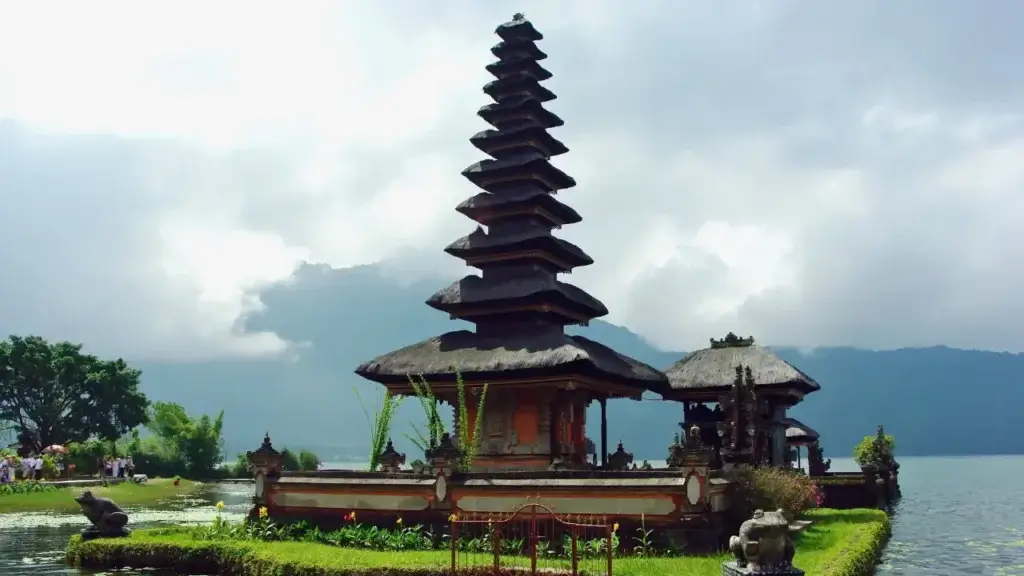
Credit: Canva
Bali isn’t just for backpackers and yoga retreats anymore. In 2025, it’s become one of the premier destinations for luxury travelers who want it all—secluded beaches, lush jungles, high-end wellness, and exceptional service. Whether you’re soaking in a cliffside infinity pool in Uluwatu or enjoying a jungle massage in Ubud, Bali knows how to pamper.
Luxury in Bali means staying in private villas like those at Bvlgari Resort Bali or the Four Seasons at Sayan, where you get personal butlers, chefs, and spa services without ever leaving your room. These properties offer a level of exclusivity and tranquility that rivals any five-star destination in the world.
Beyond accommodations, the experiences are just as high-end. Picture a private sunrise hike up Mount Batur with a gourmet breakfast waiting at the summit, or a chartered yacht exploring the neighboring Gili Islands. Many travelers also indulge in spiritual experiences like energy healing, crystal therapy, or consultations with traditional Balinese priests—luxury with a soul.
Foodies can dive into world-class gastronomy, from beachfront seafood grills to tasting menus curated by Michelin-starred chefs. Bali even offers private cooking classes in organic farms where you can learn the secrets of Indonesian cuisine.
But what really sets Bali apart is its heart. The Balinese people are known for their warmth and hospitality, making you feel like royalty while still keeping things grounded and sincere. It’s the kind of place that doesn’t just relax your body—it elevates your spirit.
Pros
1. Beautiful Scenery: Bali has beaches, rice fields, waterfalls, and volcanoes — perfect for nature lovers and photographers.
2. Budget-Friendly: Food, hotels, and activities are cheap compared to many other countries.
3. Rich Culture: Temples, traditional dances, and daily offerings make Bali feel magical and unique.
4. Great for Remote Work: Places like Canggu and Ubud have cafés and coworking spaces for digital nomads.
5. Lots to Do: Surfing, yoga, hiking, diving, and more — Bali is full of adventure.
Cons
1. Crowded Tourist Spots: Popular areas like Kuta and Seminyak can be very busy.
2. Heavy Traffic: The roads can be jammed, and public transport is limited.
3. Some Pollution: Some beaches and towns have plastic waste or pollution issues.
4. Rainy Season: From November to March, it can rain a lot — not great for outdoor plans.
5. Tourist Scams: Like many touristy places, scams and overpriced services can happen.
Maldives – Overwater Villas and Underwater Restaurants
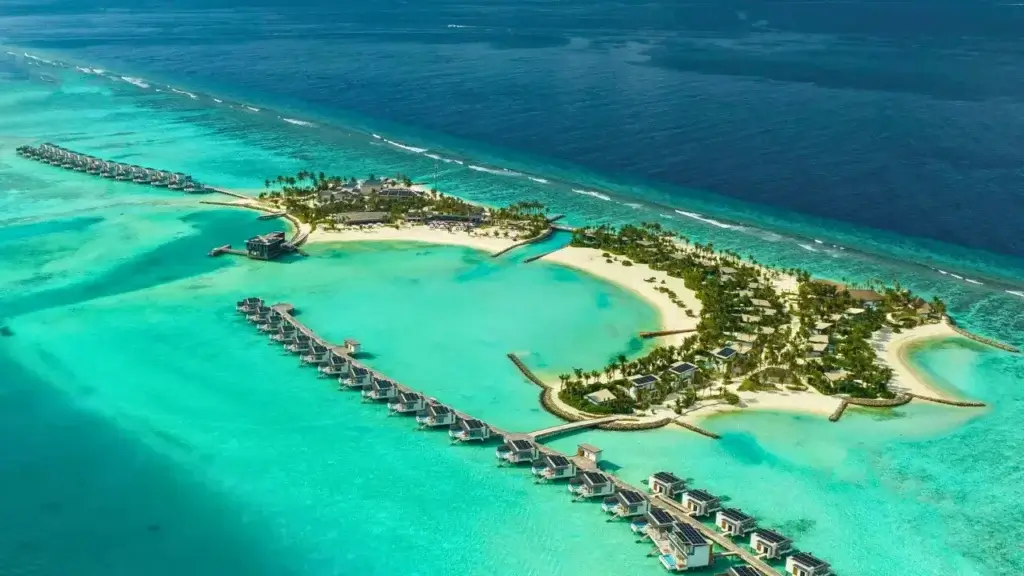
Credit: Canva
If paradise had an address in 2025, it would be the Maldives. This island nation in the Indian Ocean continues to dominate luxury travel lists for a reason. Where else can you sleep in an overwater villa with a glass floor, dine underwater surrounded by marine life, and have your own private butler—all in the same day?
The Maldives specializes in ultra-exclusive experiences. Resorts like Soneva Jani, The St. Regis Vommuli, and Cheval Blanc Randheli are accessible only by private seaplane and offer some of the most luxurious accommodations on Earth. Think private pools, retractable roofs for stargazing, and outdoor bathtubs that seem to float above the ocean.
What makes the Maldives unique is how it blends natural beauty with high-end design and service. Each resort is on its own island, meaning privacy is unparalleled. Whether you’re on a honeymoon, celebrating a milestone, or just escaping the world, this is where you go to disconnect in style.
Activities here go beyond the norm. You can have a spa treatment in an underwater room, go snorkeling with manta rays, or take a sunset dolphin cruise with a private chef on board. And for the ultimate splurge, why not rent out an entire island?
Despite the extravagance, many Maldivian resorts are now focused on sustainability. Solar-powered villas, marine conservation programs, and eco-conscious architecture are standard, proving that luxury and responsibility can coexist beautifully.
Pros
1. Once-in-a-Lifetime Experience: Staying in an overwater villa or dining under the sea is truly unforgettable. It’s luxury at its finest!
2. Incredible Views: Crystal-clear water, white sand, and endless ocean views — right from your room or dining table.
3. Privacy and Romance: Perfect for honeymoons or romantic getaways. Many villas have private pools, decks, and direct access to the ocean.
4. Unique Dining: Underwater restaurants like Ithaa and 5.8 Undersea offer a magical dining experience surrounded by marine life.
5. World-Class Service: Expect top-notch hospitality, personalized touches, and luxurious amenities.
Cons
1. Very Expensive: Overwater villas and underwater restaurants come with a high price tag — often thousands per night or meal.
2. Limited Activities: Once you’re at the resort, options are often limited to snorkeling, spa, and relaxing — which might not suit active travelers.
3. Travel Time: Getting to your villa usually requires a long flight + sea plane or boat ride.
4. Not Eco-Friendly: Overwater structures can impact coral reefs and marine life, depending on how they’re built.
5. Weather Risks: Maldives has a rainy season (May–October), which can affect visibility and activities.
North American Luxuries
Aspen, Colorado – Chic Snow-Capped Sophistication
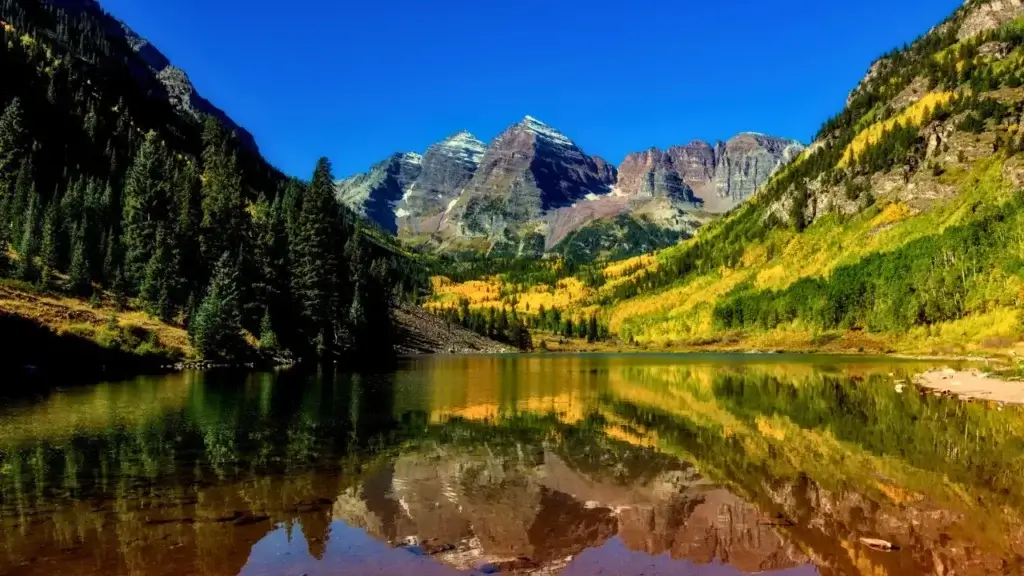
Credit: Canva
Aspen has always been synonymous with luxury, but in 2025, it’s setting a new gold standard. This Rocky Mountain haven attracts celebrities, billionaires, and discerning travelers who expect nothing but the best. Whether you’re hitting the slopes or sipping champagne by the fireplace, Aspen makes every moment feel like a curated experience.
What’s impressive is how Aspen merges rugged nature with polished refinement. Stay at opulent ski-in/ski-out resorts like The Little Nell or the St. Regis Aspen Resort, where suites come with heated marble floors, personalized ski valets, and world-class spas. Private chalets in the mountains offer even more seclusion and luxury—some complete with chefs, drivers, and home theaters.
The skiing? Top-tier. The après-ski? Unmatched. Think rooftop hot tubs, live music, and gourmet hot chocolate spiked with the finest liquors. If snow sports aren’t your thing, Aspen has much more to offer: fine art galleries, luxury boutiques, and a thriving culinary scene with restaurants that rival those in New York or Paris.
But the best part? Aspen offers luxury year-round. In summer, the snowy vistas give way to green trails and wildflowers, perfect for hiking, horseback riding, and outdoor yoga with mountain views. There are also music festivals, food and wine classics, and wellness retreats that attract the global elite.
Aspen doesn’t just provide luxury—it embodies it, with a rustic sophistication that’s both elegant and exhilarating.
Pros:
1. Luxury Winter Wonderland: Aspen is world-renowned for its luxury ski resorts, including Aspen Snowmass and Buttermilk. Visitors enjoy snow-capped peaks, upscale lodges, and glamorous après-ski culture.
2. Year-Round Adventure Destination: While famous for skiing, Aspen offers summer hiking, mountain biking, white-water rafting, and fall foliage tours—making it a four-season getaway.
3. Chic Shopping & Dining: Stroll through Aspen’s high-end boutiques, local artisan shops, and dine at Michelin-star-quality restaurants. The city effortlessly blends Rocky Mountain rustic with urban sophistication.
4. Cultural & Artistic Scene: Home to the Aspen Music Festival, Ballet Aspen, and Anderson Ranch Arts Center, this mountain town is a hub for art, culture, and creativity.
5. Breathtaking Scenery: With iconic views of the Maroon Bells, crystal-clear lakes, and pine-covered slopes, Aspen offers unmatched natural beauty for photographers and nature lovers alike.
Cons:
1. Expensive Getaway: Aspen is one of the most expensive ski towns in the U.S., with premium hotel rates, pricey dining, and luxury-level costs—even during the off-season.
2. Crowded Peak Seasons: Winter and summer attract large crowds, making lodging scarce and lift lines long, especially during holidays and major events.
3. Altitude Adjustment Required: Located at over 8,000 feet elevation, some visitors experience altitude sickness, which may affect comfort and activity levels.
4. Limited Budget Options: There are few budget accommodations and dining options. Travelers on a tight budget may find nearby towns like Glenwood Springs or Carbondale more affordable.
5. Accessibility Challenges: Aspen’s remote location means limited direct flights, especially in winter. Road access via mountain passes can also be affected by snowstorms and icy conditions.
Napa Valley, California – Wine, Wellness, and Wonder
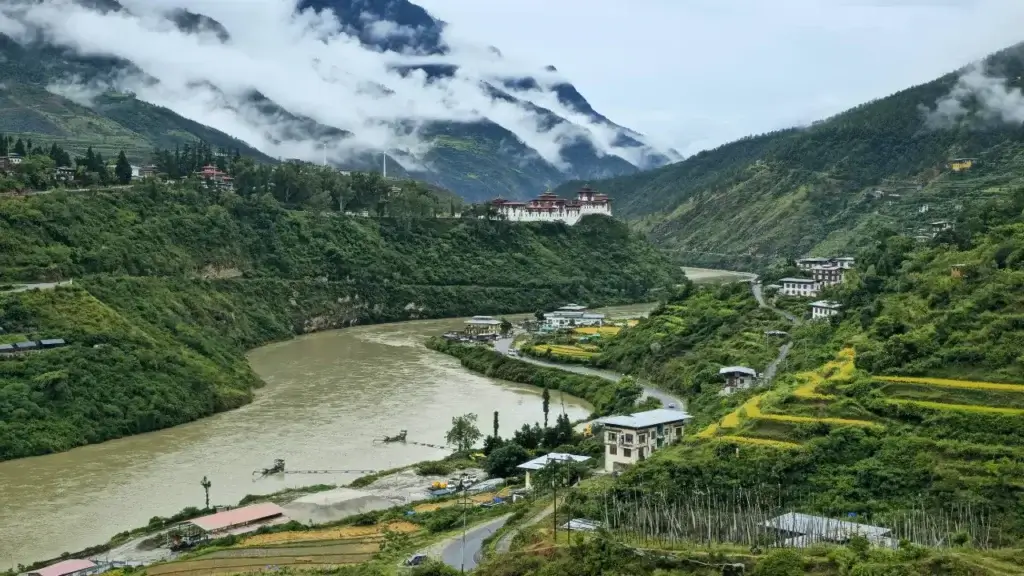
Credit: Canva
Napa Valley has always been a dream destination for wine lovers, but in 2025, it’s evolved into a full-fledged luxury retreat. Rolling vineyards, Michelin-starred restaurants, and five-star resorts combine to make Napa one of North America’s most indulgent escapes.
Start your trip with a stay at Auberge du Soleil, Meadowood, or Stanly Ranch—each offering vineyard views, spa sanctuaries, and private experiences like in-room tastings or outdoor baths under the stars. The accommodations here aren’t just luxurious—they’re an experience in themselves.
But the true magic of Napa lies in its wines. Go beyond the typical tasting tours and explore private cellar visits, sommelier-led pairings, and even hands-on winemaking sessions. Some estates like Opus One or Castello di Amorosa offer VIP access to members-only lounges and rare vintages not available anywhere else.
Wellness is another huge draw. Many resorts have world-class spas that incorporate grape seed oils and vinotherapy into treatments. You can also enjoy yoga sessions in the vineyard, guided forest bathing, or cooking classes with farm-to-table chefs.
And let’s not forget the food. Napa is home to The French Laundry and other Michelin-starred gems where every meal is a work of art. Dining here is not just about flavor—it’s about experience, ambiance, and storytelling.
For travelers seeking serenity with a side of sophistication, Napa delivers in every drop, bite, and breath.
Pros:
1. World-Class Wine Country: Napa Valley is internationally celebrated for its award-winning wineries, vineyard tours, and premium wine tastings, especially its Cabernet Sauvignon and Chardonnay.
2. Gourmet Food Scene: From Michelin-star restaurants to farm-to-table dining, Napa Valley is a culinary paradise. The region is a haven for foodies, with seasonal menus and locally sourced ingredients.
3. Scenic Landscapes & Vineyard Views: Rolling hills, sun-drenched vineyards, and picturesque countryside make Napa one of the most beautiful places in California, perfect for relaxation or romantic getaways.
4. Luxurious Resorts & Spas: Visitors enjoy high-end accommodations, boutique hotels, and indulgent spa experiences, offering the ultimate wine country retreat.
5. Mild, Pleasant Weather: With its Mediterranean climate, Napa Valley boasts warm days and cool nights, ideal for year-round visits, especially during the harvest season (August–October).
Cons:
1. High Cost of Travel: Napa Valley is a premium travel destination, with expensive lodging, wine tastings, and dining experiences. Budget-conscious travelers may find it challenging.
2. Overcrowding During Peak Season: Spring and fall bring large crowds. Wineries and restaurants fill up quickly, making advance reservations essential and sometimes limiting spontaneity.
3. Limited Nightlife: If you’re looking for vibrant nightlife or late-night entertainment, Napa may feel quiet and subdued after dark, with most venues closing early.
4. Traffic & Transportation: Weekend traffic on Highway 29 and Silverado Trail can be frustrating. Also, limited public transport means renting a car or hiring a driver is often necessary.
5. Wine-Centric Focus: While Napa is perfect for wine lovers, those not interested in wine might find limited alternative activities compared to other California destinations.
Banff, Canada – Wilderness Meets High-End Comfort
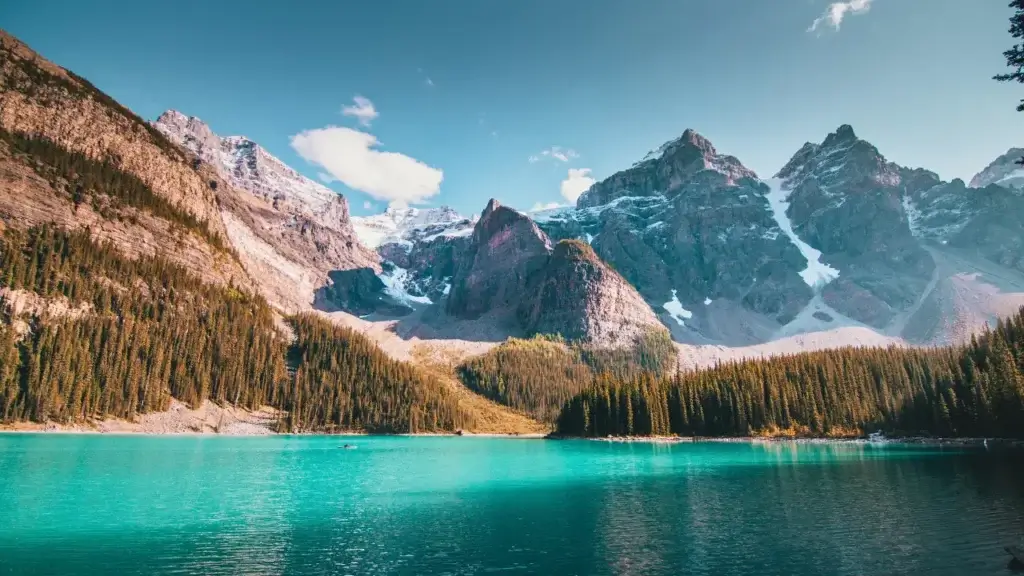
Credit: Canva
If your idea of luxury includes pristine landscapes and untouched wilderness, then Banff should be at the top of your list. Nestled in the Canadian Rockies, Banff offers a rare combination of natural beauty and upscale comfort that’s hard to find anywhere else.
In 2025, luxury travel to Banff has seen a major upgrade. Think Fairmont Banff Springs—a castle in the mountains that offers helicopter tours, thermal spa experiences, and gourmet dining with alpine views. You can also opt for private mountain lodges where the only neighbors are elk and the occasional grizzly bear.
The activities here are all about immersing yourself in nature, but in style. Go glacier hiking with a private guide, soak in natural hot springs under the stars, or enjoy a scenic canoe ride on the turquoise waters of Lake Louise. In the winter, you can enjoy heli-skiing, dog sledding, or even private ice climbing lessons—followed by mulled wine by a roaring fire.
Banff is also deeply committed to sustainability. Many of the luxury accommodations are eco-certified, offering solar-powered suites, organic dining, and conservation-focused tours. It’s luxury that respects the land and culture it inhabits.
If you’re looking to unplug without sacrificing comfort, Banff is the place. It’s raw, it’s real, and it’s ridiculously refined.
Pros:
1. Stunning Natural Scenery: Banff is located in the heart of the Canadian Rockies and offers jaw-dropping views of glacier-fed lakes, snow-capped peaks, and dense pine forests—most famously Lake Louise and Moraine Lake.
2. Outdoor Adventure All Year Round: Whether it’s skiing in winter, hiking in summer, or wildlife watching in fall, Banff is an all-season outdoor paradise for adventurers and nature lovers alike.
3. Charming Mountain Town Atmosphere: The town of Banff blends rustic charm with modern comfort, featuring cozy lodges, boutique shops, and local restaurants, all surrounded by breathtaking landscapes.
4. Banff National Park Access: As part of Canada’s oldest national park, Banff provides protected access to pristine wilderness, natural hot springs, and hundreds of kilometers of trails.
5. Photographer’s Dream: With iconic views like Peyto Lake’s wolf-head shape, the Icefields Parkway, and alpine wildlife, Banff is a top destination for travel photographers and Instagram enthusiasts.
Cons:
1. Very Touristy in Peak Seasons: Summer and winter bring large crowds. Major attractions like Lake Louise often experience heavy foot traffic, parking shortages, and crowded viewpoints.
2. High Accommodation Costs: Hotels and lodges in Banff tend to be expensive, especially during high season. Budget accommodations book quickly, and camping permits are competitive.
3. Weather Can Be Unpredictable: Banff’s mountain weather changes rapidly. Even in summer, you may encounter sudden snow, rain, or temperature drops, which can disrupt plans.
4. Remote Location: While beautiful, Banff is not easily accessible without a car. The nearest major airport is in Calgary (about 90 minutes away), and public transit options are limited for deeper exploration.
5. Wildlife Safety Concerns: While exciting to spot bears or elk, visitors must be cautious. Strict wildlife rules and safety practices are necessary to avoid dangerous encounters.
Middle Eastern Marvels
Dubai, UAE – Futuristic Skyscrapers and Desert Palaces
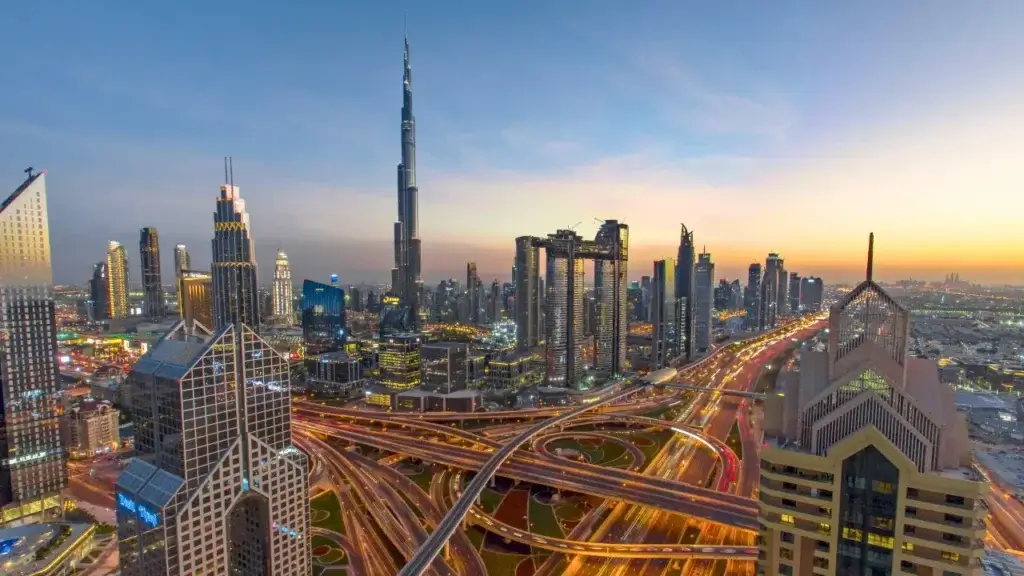
Credit: Canva
Dubai is where over-the-top meets awe-inspiring. In 2025, it continues to push the boundaries of luxury with futuristic architecture, seven-star hotels, and experiences so lavish they feel like scenes from a sci-fi film. Want to stay in the world’s tallest hotel, dine in the clouds, or go skiing indoors in the middle of the desert? Dubai makes it all possible.
The city’s luxury scene starts with accommodations. Choose from iconic landmarks like Burj Al Arab, the Atlantis The Royal, or the ultra-luxurious Bulgari Resort. These properties offer everything from underwater suites to private beach villas, with personal butlers, Rolls Royce transfers, and gold-infused spa treatments.
Shopping in Dubai is a sport of its own. The Dubai Mall and Mall of the Emirates house every luxury brand imaginable, plus VIP lounges where you can get private styling sessions or have your purchases delivered directly to your suite.
But it’s not just about glitz. Dubai offers cultural depth too. You can tour the Al Fahidi historical district, enjoy an Emirati dinner in the desert under the stars, or visit the Museum of the Future to glimpse what’s next in tech and design.
Adventure lovers can take luxury desert safaris with gourmet dining, falconry shows, and sunset camel rides. Or cruise along the marina in a private yacht with skyline views that dazzle day and night.
Dubai doesn’t just offer luxury—it redefines it with every new skyscraper and experience.
Pros:
1. World-Class Attractions & Iconic Landmarks: Dubai is home to Burj Khalifa (the world’s tallest building), the Palm Jumeirah, and Dubai Mall—offering visitors futuristic architecture, record-breaking sights, and luxury shopping experiences.
2. Luxury and Innovation: From 7-star hotels like Burj Al Arab to desert safaris in a Rolls-Royce, Dubai is a haven for luxury travelers, tech enthusiasts, and innovative architecture lovers.
3. Safe and Clean City: Dubai is considered one of the safest cities in the world, with strict laws, low crime rates, and clean, well-maintained infrastructure.
4. Shopping Paradise: Visitors flock to Dubai for its tax-free shopping, massive malls, traditional souks, and seasonal shopping festivals like the Dubai Shopping Festival (DSF).
5. Cultural Diversity and Global Cuisine: Dubai is home to over 200 nationalities, offering authentic cuisine from around the world, cultural events, and a truly global city experience.
Cons
1. Extreme Summer Heat: From June to September, Dubai experiences scorching temperatures (often over 45°C / 113°F), limiting outdoor activities and requiring indoor-only itineraries.
2. Expensive for Tourists: Luxury comes at a price. Accommodation, fine dining, activities, and even transportation can be quite costly, especially in high-demand areas like Downtown Dubai or The Palm.
3. Strict Laws and Cultural Restrictions: Dubai has conservative laws regarding public behavior, dress codes, and alcohol consumption. Tourists must be mindful to respect local customs and avoid legal trouble.
4. Heavy Traffic and Costly Transport: While public transit exists, Dubai still heavily relies on cars. Traffic congestion, expensive taxi fares, and limited metro reach can be inconvenient for first-time visitors.
5. Limited Historical or Natural Attractions: Dubai is mostly modern and man-made. Those looking for ancient ruins or untouched nature might find Abu Dhabi, Oman, or other nearby destinations more fulfilling.
Doha, Qatar – Pearl of the Persian Gulf with Luxe Culture
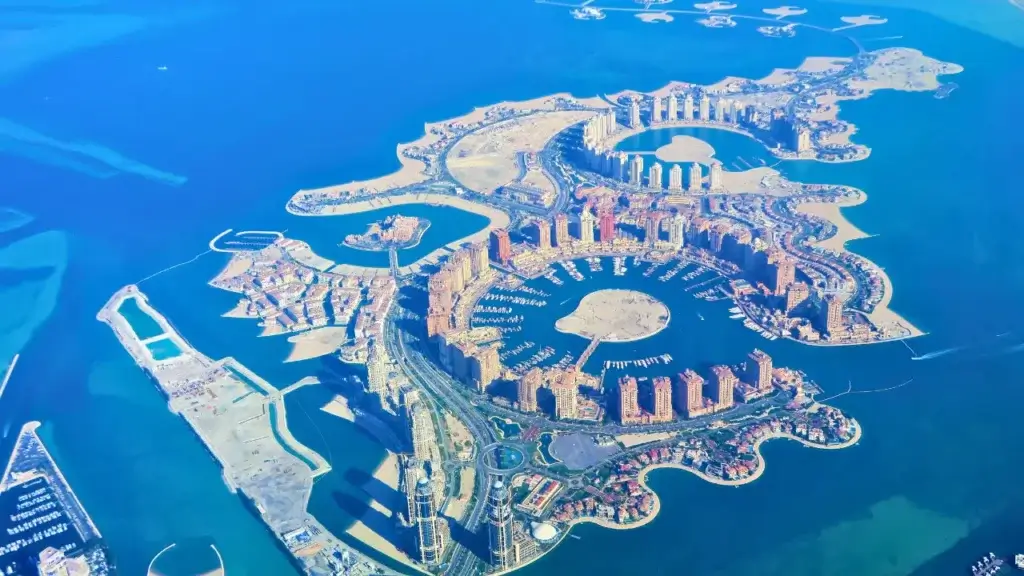
Credit: Expedia
Often overshadowed by its flashier neighbor Dubai, Doha has emerged in 2025 as one of the Middle East’s most sophisticated luxury destinations. Rich in culture, dripping in elegance, and newly energized by its investments in art and design, Doha offers an exquisite mix of tradition and modernity.
The city’s accommodations set the tone for luxury. Stay at the Mandarin Oriental, Al Messila Resort, or the St. Regis Doha, where Arabian elegance meets cutting-edge design. Many of these hotels offer exclusive amenities like private beach access, hammam spas, and fine-dining experiences that blend local ingredients with global techniques.
Doha’s art and culture scene is booming. The Museum of Islamic Art and the futuristic National Museum of Qatar are architectural masterpieces housing world-class collections. Many luxury travel planners can arrange private, after-hours tours or art walks with curators.
For shoppers, Souq Waqif offers a taste of traditional commerce with a luxurious twist—think gold jewelry, handwoven silks, and artisanal perfumes. Meanwhile, the Pearl-Qatar is where you’ll find high-end boutiques, waterfront cafés, and luxury residences.
Dining in Doha is a culinary journey, from authentic Middle Eastern feasts to haute cuisine by celebrity chefs. And for those wanting a unique experience, desert glamping in fully serviced tents complete with A/C, gourmet meals, and stargazing lounges offers a surreal kind of luxury.
In Doha, everything is deliberate, designed, and distinctly deluxe.
Pros:
1. Modern Meets Tradition: Doha beautifully blends futuristic skyscrapers with rich Islamic culture. Visitors can explore modern architecture, like the Doha Tower, alongside traditional sites like the Souq Waqif and Katara Cultural Village.
2. World-Class Museums & Culture: The city is home to cultural landmarks like the Museum of Islamic Art and National Museum of Qatar, making it a hub for art, history, and design lovers.
3. Luxury Accommodations & Experiences: Doha offers 5-star hotels, high-end dining, and desert safaris, catering to travelers seeking luxury and exclusivity in the heart of the Middle East.
4. Safe, Clean, and Well-Developed City: With low crime rates, strict regulations, and modern infrastructure, Doha is one of the safest and cleanest cities in the region.
5. Growing Sports & Events Destination: After hosting the FIFA World Cup 2022, Doha is now a global stage for major sports, business expos, and cultural festivals, attracting international visitors year-round.
Cons:
1. Extreme Heat in Summer: From May to September, Doha can be uncomfortably hot, with temperatures often exceeding 45°C (113°F), making most outdoor activities difficult or limited.
2. Strict Cultural Norms: Visitors must respect Qatar’s conservative laws, especially regarding dress codes, alcohol, and public behavior. Inappropriate actions can lead to fines or legal issues.
3. Limited Nightlife: While luxury hotels offer bars and lounges, Doha has very limited nightlife compared to other global cities due to alcohol restrictions and cultural values.
4. High Cost for Tourists: Doha can be expensive. Accommodation, fine dining, and imported goods often come at premium prices, especially in upscale districts like The Pearl-Qatar or West Bay.
5. Less Green and Natural Attractions: Outside of the desert and coast, there are fewer natural landscapes compared to destinations like Oman or Jordan. Nature lovers may find it less diverse.
African Adventures in Style
Cape Town, South Africa – Coastal Luxury with a Cultural Twist
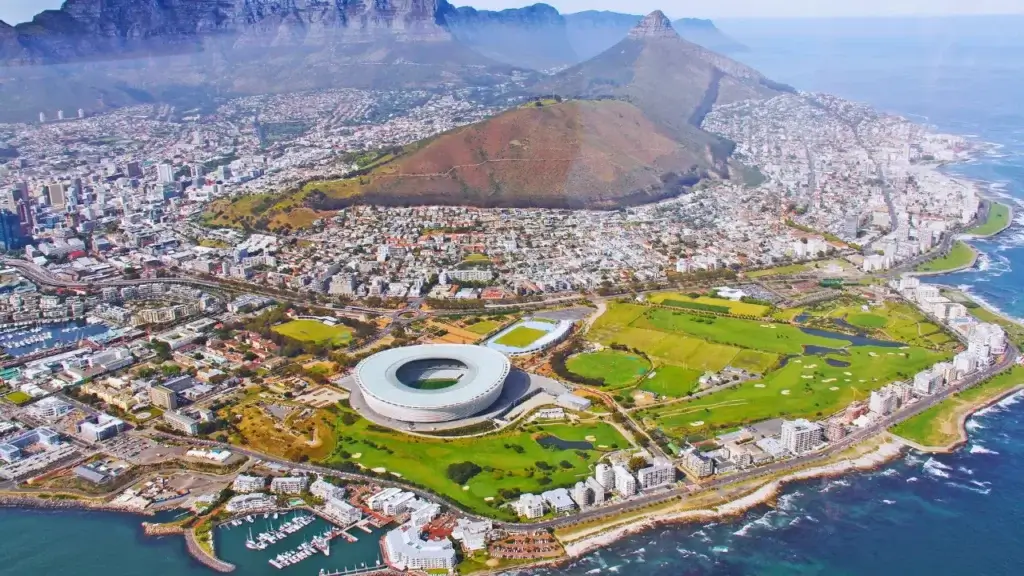
Credit: Canva
Cape Town offers a rare mix of stunning landscapes, cultural richness, and opulent hospitality. In 2025, it’s one of Africa’s most desirable luxury travel destinations. Set against the iconic Table Mountain and bordered by turquoise oceans, Cape Town blends wild nature with cosmopolitan flair like nowhere else.
Stay in plush boutique hotels like Ellerman House, nestled in the cliffs with panoramic sea views, or opt for the ultra-modern One & Only Cape Town located at the heart of the vibrant Victoria & Alfred Waterfront. These high-end accommodations come with all the bells and whistles: personal butlers, in-room spa services, and curated local experiences.
Food and wine are central to Cape Town’s luxury appeal. The nearby Cape Winelands are home to world-renowned estates where you can enjoy private tastings, vineyard picnics, and chef-led food pairings. Back in the city, Michelin-starred restaurants like FYN and La Colombe offer inventive dishes inspired by African and Asian flavors.
Adventure meets indulgence here. Go on a private helicopter ride over the Cape Peninsula, or book an exclusive cage dive with great white sharks. You can also hike Lion’s Head at sunrise, then unwind with a massage overlooking the Atlantic.
Cape Town’s cultural edge also shines through. Tour the Bo-Kaap with a historian, explore Robben Island in a private boat, or visit local markets for artisan treasures. It’s a place where luxury doesn’t isolate you from local life—it immerses you in it.
Pros:
1. Breathtaking Coastal Scenery: Cape Town is known for its stunning landscapes, from Table Mountain and Lion’s Head to Camps Bay’s beaches and the rugged Cape of Good Hope. It’s a paradise for photographers and nature lovers.
2. Luxury Experiences at Great Value: Visitors enjoy 5-star hotels, wine estates, and gourmet cuisine at a fraction of the price compared to other luxury destinations, making Cape Town ideal for affordable indulgence.
3. Vibrant Multicultural Scene: As a city with deep historical roots, Cape Town offers a diverse blend of cultures, reflected in its art, music, festivals, and food—especially in neighborhoods like Bo-Kaap and Woodstock.
4. World-Class Wine & Cuisine: Just a short drive away lies the Cape Winelands, famous for award-winning wines and gourmet dining experiences in towns like Stellenbosch and Franschhoek.
5. Adventure & Outdoor Activities: Whether it’s shark cage diving, paragliding off Signal Hill, hiking, or surfing, Cape Town is a top destination for adrenaline junkies and outdoor enthusiasts.
Cons:
1. Safety Concerns in Certain Areas: While tourist zones are generally safe, some areas of Cape Town face high crime rates. Travelers must stay informed, use reputable transport, and follow local safety advice.
2. Seasonal Wind and Variable Weather: The city is known for its strong winds, particularly the Cape Doctor in summer, and unpredictable weather that can shift between sunny and rainy quickly.
3. Water Scarcity Issues: Cape Town has faced serious droughts, and water conservation remains important. While not a major disruption, visitors may encounter restrictions on water use.
4. Long Travel Time from Many Countries: For North American or European travelers, reaching Cape Town typically involves long-haul flights with one or more stopovers, making the journey time-consuming.
5. Income Inequality and Social Challenges: Visible contrasts between luxury and poverty can be jarring for some visitors. While the city thrives on tourism, issues of inequality and historical legacy remain present.
Serengeti, Tanzania – Safari Chic and Exclusive Lodges
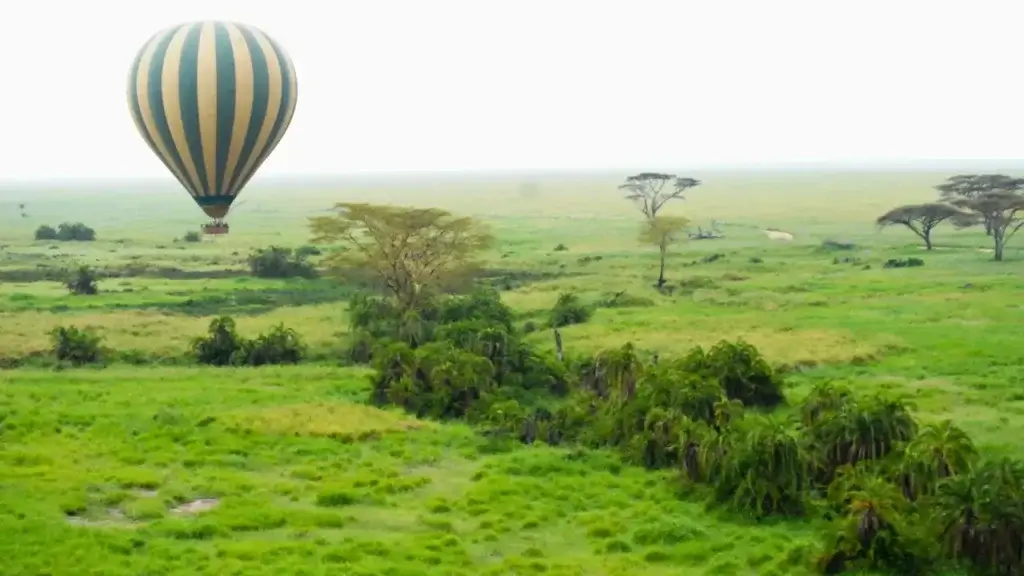
Credit: Canva
For many, going on safari is a once-in-a-lifetime dream—but in 2025, the Serengeti makes it a once-in-a-luxury lifetime experience. This legendary region of Tanzania offers unmatched wildlife encounters in style, combining raw nature with ultra-exclusive lodging.
Luxury safaris have evolved dramatically. Say goodbye to dusty tents and hello to five-star lodges like Singita Sasakwa or &Beyond Grumeti. These properties offer everything from private plunge pools to gourmet dining under the stars. Some even provide spa treatments and wine cellars, all in the middle of the wilderness.
The wildlife? It’s the real luxury here. Witness the Great Migration from a private hot-air balloon or go on guided drives with top-tier trackers who know the Serengeti inside and out. You’ll see lions, elephants, leopards, and cheetahs—all from the comfort of a plush, open-air vehicle stocked with champagne and snacks.
Many of these lodges also emphasize sustainability. Solar power, water conservation, and partnerships with local communities are standard. And your guides often come from these communities, offering authentic insights that make the experience even richer.
Serengeti is where untamed nature meets five-star living. It’s not just about what you see—it’s about how you see it, and in 2025, that’s with elegance, comfort, and purpose.
Pros:
1. Unmatched Wildlife Viewing: The Serengeti is world-famous for its abundant wildlife, including the Big Five (lion, leopard, elephant, rhino, and buffalo). It offers some of the best safari experiences on the planet.
2. The Great Migration: Home to the annual Great Wildebeest Migration, where over 2 million wildebeest, zebras, and gazelles move across the plains — a bucket-list natural wonder.
3. Stunning, Unspoiled Landscapes: Expect vast golden savannas, acacia-dotted plains, and dramatic sunsets. The Serengeti offers pristine, cinematic views that remain largely untouched by development.
4. Variety of Safari Options: From budget-friendly camping safaris to ultra-luxury lodges, the Serengeti caters to all travel styles. You can experience the wild your way, whether in a jeep, hot air balloon, or guided walking tour.
5. Conservation-Focused Tourism: Visiting the Serengeti helps support conservation efforts and local communities, making your travel experience both impactful and meaningful.
Cons
1. Remote and Hard to Reach: Getting to the Serengeti often requires multiple flights or long drives from major cities like Arusha or Kilimanjaro, which can be time-consuming and costly.
2. Expensive Park Fees and Tours: National park fees and guided safaris can be pricey, especially for multi-day experiences. Luxury lodges and tours may stretch a travel budget quickly.
3. Limited Wi-Fi and Cell Service: Once you’re deep in the park, expect very limited internet access, making it difficult to stay connected or work remotely during your visit.
4. Hot, Dusty, and Buggy Conditions: The Serengeti can be very hot and dry during the day, cold at night, and home to mosquitoes and tsetse flies — making insect repellent and health precautions essential.
5. Strict Environmental Regulations: While necessary, the Serengeti’s rules about off-roading, waste disposal, and conservation zones can limit some tourist activities and require strict adherence to guidelines.
Marrakech, Morocco – Royal Riads and Exotic Opulence

Credit: Canva
Marrakech is a city that teases the senses and in 2025, it’s a treasure trove for luxury seekers. From labyrinthine souks and aromatic food stalls to palatial riads hidden behind ancient doors, Marrakech offers a kind of magic that feels both ancient and hyper-luxurious.
Staying in a traditional riad is the essence of Marrakechi luxury. Book a suite at Royal Mansour—owned by the King of Morocco—or La Mamounia, where the service is so tailored, it feels almost telepathic. These properties boast mosaiced spas, courtyard pools, and rooftop terraces perfect for sunset mint tea.
But luxury in Marrakech goes beyond the walls of your hotel. Take a private guided tour through the Medina, dine in exclusive garden settings like Le Jardin or Dar Yacout, and get custom-fitted in a hand-woven kaftan at a high-end boutique.
For a deeper escape, luxury desert excursions to the Agafay Desert are a must. Imagine camel rides at dusk, followed by dinner in a luxury tent lit by a thousand lanterns. Or explore the Atlas Mountains on a helicopter day trip with a champagne lunch overlooking the valleys.
Marrakech mixes sensuality with sophistication. It’s chaotic in the best way—and somehow, amidst all that energy, you find calm, beauty, and indulgence that’s impossible to forget.
Pros:
1. Vibrant Culture and Historic Charm: Marrakech offers a rich blend of Berber, Arab, and French influences, evident in its architecture, music, and daily life. The UNESCO-listed Medina is a maze of tradition and energy.
2. Exotic Souks and Artisan Shopping: The city is known for its colorful souks (markets) filled with handmade carpets, spices, ceramics, leather goods, and lanterns—a paradise for shoppers and photographers alike.
3. Affordable Luxury Experiences: Compared to other global cities, Marrakech provides affordable 5-star stays, traditional hammams, fine dining, and private guided tours without breaking the bank.
4. Delicious Moroccan Cuisine: Tagines, couscous, mint tea, and pastilla are just a few highlights of Marrakech’s rich culinary offerings, with options ranging from street food to gourmet rooftop dining.
5. Unique Architecture and Riads: Visitors can stay in authentic Moroccan riads (traditional homes with inner courtyards) and explore stunning sites like the Koutoubia Mosque, Bahia Palace, and Majorelle Garden.
Cons:
1. Overwhelming for First-Time Visitors: The busy medina, aggressive bargaining, and persistent street vendors can be intense or uncomfortable for those unfamiliar with North African markets.
2. Language Barriers: While many people speak French or Arabic, English may not be widely understood in some areas, making communication a bit of a challenge at times.
3. Heat and Dust: In summer, Marrakech can get extremely hot (over 40°C / 104°F), and dusty streets can be tiring. The best time to visit is spring or autumn for milder weather.
4. Traffic and Noise: Navigating Marrakech can be chaotic due to busy traffic, noisy motorbikes, and limited pedestrian spaces—especially in the older parts of the city.
5. Cultural Sensitivity Required: Visitors need to respect conservative dress codes, avoid public displays of affection, and follow Islamic customs, which may feel restrictive to some tourists.
Ultra-Luxury Cruise Destinations for 2025
Mediterranean Yachting Adventures
Luxury travel in 2025 isn’t just about where you go—it’s how you get there. And Mediterranean yacht cruises are redefining high-end travel. Whether you’re anchoring off the coast of Monaco or sipping espresso on the Amalfi Coast, yachting offers the ultimate blend of mobility and opulence.
Charter a private superyacht complete with a personal crew, chef, and on-board spa, or join a boutique luxury cruise like Explora Journeys or The Ritz-Carlton Yacht Collection. These ships feel more like floating five-star hotels, with fine dining, infinity pools, and world-class entertainment.
Routes often include iconic ports like Santorini, Portofino, and Dubrovnik. Each destination is a curated experience: private vineyard tours in Tuscany, guided archaeological explorations in Greece, or a beachside lunch in Corsica—all organized to your preferences.
Back on board, enjoy wine tastings, cigar lounges, or even submarine tours (yes, some yachts offer that now). And unlike traditional cruises, there are no crowds—just personalized service and all the space you need.
Luxury yachting in the Mediterranean is more than a trend—it’s a lifestyle. In 2025, it represents the pinnacle of relaxed, refined exploration.
Arctic Expeditions in Floating Palaces
If you think the Arctic is just for adventurers, think again. In 2025, it’s one of the most exclusive frontiers for luxury travelers. Arctic cruises now combine extreme destinations with ultra-high-end accommodations, offering a once-in-a-lifetime journey without sacrificing comfort.
Companies like Silversea, Ponant, and Scenic Eclipse are pioneering this movement, with polar-class ships that feature spas, fine dining, helicopter pads, and even underwater lounges. These vessels cruise through icy fjords and glacier-studded waters, taking you to some of the most remote, untouched corners of the planet.
Excursions include Zodiac tours past icebergs, encounters with polar bears and walruses, and visits to Inuit villages where you can learn about native culture. But the experience onboard is just as thrilling. Think butler service, thermal suites, panoramic observation lounges, and six-star cuisine—all with Arctic views.
And the best part? These expeditions are now designed with sustainability at their core. Hybrid engines, low-impact waste systems, and partnerships with environmental organizations ensure your trip supports conservation efforts.
Luxury in 2025 isn’t just about indulgence—it’s about doing something few others have done, in a way that leaves a positive impact. And Arctic luxury cruises tick every box.
Sustainable Luxury: A Growing Trend in 2025
Eco-Luxury Resorts That Don’t Compromise Comfort
In 2025, sustainable travel is no longer a niche—it’s the new luxury standard. High-end travelers are demanding more from the places they stay, not just in terms of opulence but also in ethical and environmental responsibility. Enter eco-luxury resorts, where you can enjoy the height of comfort without a guilty conscience.
These properties are redefining what luxury looks like. We’re talking solar-powered villas, zero-waste restaurants, rainwater harvesting, and architecture that blends seamlessly into natural landscapes. Resorts like Six Senses, Soneva, and Song Saa are pioneers in this space, offering experiences that marry indulgence with sustainability.
Imagine staying in an overwater bungalow in Cambodia built from reclaimed wood and local materials, or a mountaintop retreat in Bhutan that uses passive solar heating and serves meals sourced entirely from its own organic farm. You still get the plush robes, the infinity pools, and the five-star dining—but it all comes with a conscious twist.
Many eco-resorts also offer experiences that let you engage with local communities and conservation efforts. Think coral planting in the Maldives, jungle clean-ups in Costa Rica, or learning traditional farming methods in the Philippines. These aren’t gimmicks—they’re immersive ways to connect with your destination on a deeper level.
In 2025, the most luxurious thing you can do is tread lightly. And the best part? You won’t feel like you’re giving anything up—in fact, the experience often feels richer, more meaningful, and more connected than traditional luxury ever could.
How Travelers Are Demanding Greener Luxury Options
Today’s luxury traveler isn’t just looking for gold faucets and gourmet meals—they want to know their travel choices matter. In 2025, the demand for greener luxury options has exploded, and the industry is racing to meet expectations. Travelers want to reduce their carbon footprint, support local communities, and stay in places that are actively making a difference.
And this isn’t just a trend among the eco-conscious younger crowd. High-net-worth individuals across all age groups are choosing private jets that offset emissions, cruises that run on hybrid fuel, and hotels that are LEED-certified. In fact, many luxury travel planners now include sustainability ratings as part of their package presentations.
Luxury brands are listening. From Ritz-Carlton to Aman Resorts, many now offer sustainability-focused experiences like organic cooking classes, farm tours, and cultural workshops. Some even donate a portion of their profits to environmental causes or local charities, allowing guests to travel with purpose.
The travel industry is also seeing an increase in transparency. More properties are publishing annual sustainability reports, offering carbon calculators on their websites, and working with third-party auditors to verify their green claims.
Luxury in 2025 is not just about having the best of everything—it’s about being part of something better. For today’s travelers, making a positive impact is the ultimate indulgence.
Tips for Planning Your 2025 Luxury Escape
Booking Early for Exclusive Access
Planning a luxury vacation is all about timing. In 2025, the best experiences are often booked months—or even years—in advance. Whether it’s a villa on Lake Como, a private island in the Maldives, or a bespoke safari in the Serengeti, early booking is your ticket to exclusivity.
Why so early? Because true luxury is limited. There are only so many suites in the top hotels, only a handful of top-tier guides, and only a few seats on private yachts or helicopters. If you wait too long, you might miss out on the most sought-after experiences.
Luxury travel planners recommend booking at least 6–12 months in advance, especially for peak seasons. Some ultra-luxury experiences (like the Oberoi Philae Nile Cruise or Singita’s Grumeti Reserve in Tanzania) book out over a year ahead.
Booking early also gives you more flexibility with customization. Want a private chef with expertise in Peruvian-Japanese fusion? Or a guided vineyard tour with the estate owner? These highly curated touches take time to arrange—and they’re worth it.
And don’t forget the benefits: early bookings often come with added perks like complimentary spa treatments, free upgrades, or VIP lounge access. Plus, you get more peace of mind knowing everything is locked in and ready to go.
In 2025, luxury doesn’t wait—and neither should you.
Choosing the Right Concierge or Luxury Travel Planner
When it comes to luxury travel, the right planner makes all the difference. In 2025, personal travel concierges and boutique agencies are more essential than ever. These professionals don’t just book hotels—they craft dream experiences tailored to your personality, preferences, and passions.
The best luxury travel planners are well-connected. They know which villa in Tuscany has the best sunset view, which ski resort in Switzerland is quietest in February, and which beach club in Mykonos will let you skip the line. They have insider access, from sold-out shows to private museum tours.
Many travelers now work with agencies that specialize in specific types of luxury—wellness travel, eco-travel, culinary travel, or family-friendly high-end escapes. Choose a planner who understands your style and has a track record of delivering extraordinary results.
Digital concierge services are also booming. Apps like Quintessentially and Black Tomato offer around-the-clock planning, while AI-based platforms use your data to anticipate your needs and preferences. But even with tech, the human touch remains irreplaceable.
In 2025, luxury isn’t just about where you go—it’s about how well the journey is crafted. The right planner turns a vacation into a masterpiece.
Conclusion
Luxury travel in 2025 is about more than just extravagant hotels and private jets—it’s about meaningful, personalized, and transformative experiences. From the sun-drenched coasts of the Amalfi to the icy elegance of the Arctic, the world is bursting with destinations that deliver not only opulence but soul.
We’ve seen how today’s top luxury spots offer a perfect blend of comfort, culture, adventure, and sustainability. Whether you’re lounging in a cliffside villa, cruising through Mediterranean gems on a yacht, or sleeping under the stars in a desert oasis, one thing is clear: the definition of luxury has evolved.
Now it’s about exclusivity, authenticity, and impact. It’s about where you stay, what you do, and how it makes you feel. And as the world opens its arms wider to luxury travelers seeking purpose along with pleasure, one thing remains certain—2025 is a golden age for those looking to travel in true style.
FAQs
1. What is the most luxurious destination in 2025?
The Maldives remains a top contender due to its unparalleled privacy, overwater villas, and next-level service, followed closely by exclusive safari lodges in the Serengeti and private villas on the Amalfi Coast.
2. Are there eco-friendly luxury travel options?
Absolutely. Resorts like Six Senses and Soneva lead the way in combining sustainability with opulence. Many luxury destinations now prioritize environmental impact while delivering exceptional comfort.
3. When is the best time to book a luxury vacation for 2025?
The earlier, the better. For peak seasons or in-demand experiences, book 6 to 12 months in advance to secure the best options and enjoy exclusive perks.
4. Which destination offers the best luxury for couples?
For romance and seclusion, look no further than Bora Bora, the Maldives, or Kyoto. These places offer private accommodations, breathtaking scenery, and intimate experiences.
5. What is the most expensive destination in 2025?
Dubai, Monaco, and certain private islands in the Caribbean top the list for cost, offering ultra-luxury experiences, from gold-plated suites to custom yacht charters.

